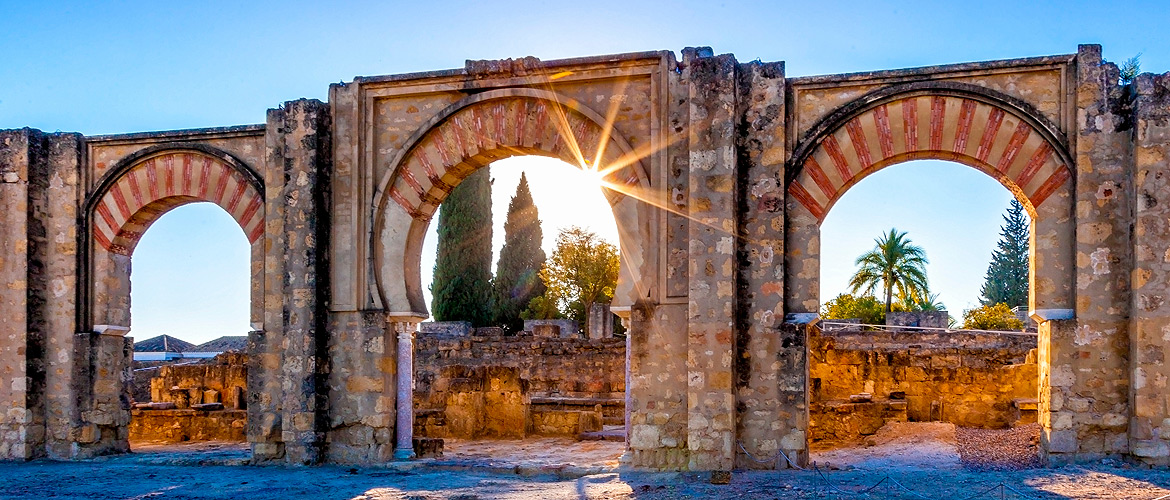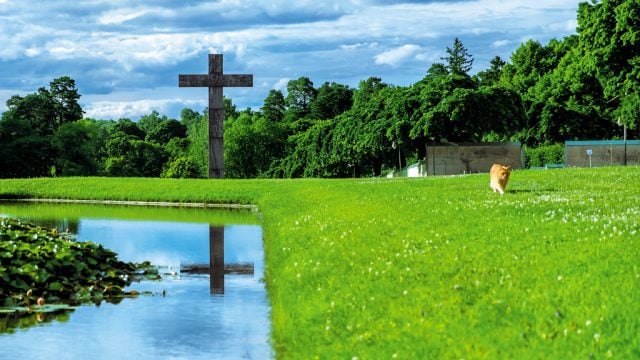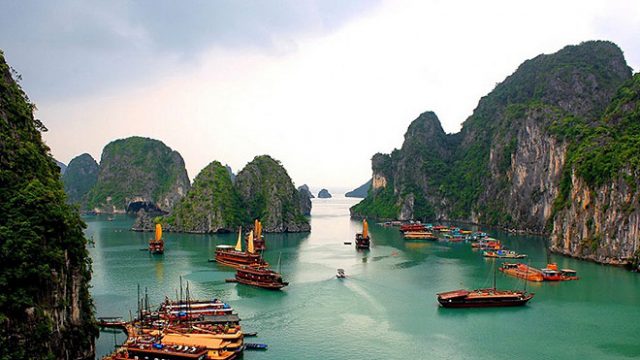What does it mean to be on the Unesco World Heritage List? For starters, it gives the
Recently, 19 new sites have been added to the list. A couple of them are from Germany, and there is—good news—one from India. Other than that, it is a quite a varied list of countries.
Aasivissuit–Nipisat in Greenland

Here’s what this erstwhile Inuit hunting ground would have looked 4,000 years ago: a busy expanse of ice and sea, with the Inuit immersed in hunting sea creatures and land denizens before retreating to their winter houses to savour the day’s meat.
Al-Ahsa in Saudi Arabia

This place continues to witness human evolution from the Neolithic period till even today. It is filled with gardens, natural and man-made waterbodies, and historical buildings. Oh, and it just about the largest oasis in the world.
Qalhat in Oman

The ancient city on Oman’s east coast is proof of the sultanate’s trade with, among other places, India.
Hedeby and the Danevirke in Germany

With its amazingly well-preserved archeological artefacts, and its role as a first-millennium CE trading town, Hedeby is quite the historical goldmine. The surrounding Danevirke, a fortification line separating the Jutland peninsula from the European mainland, adds to its heritage importance.
Medina Azahara in Spain

This, interestingly, caliphate city in Spain was first a prosperous town under the Umayyad dynasty in the 11th century CE, then laid to waste during a civil war, forgotten for a thousand years, and, finally, rediscovered in the last century.
Göbekli Tepe in Turkey

About 10,000 years ago, the hunter-gatherers of the Germuş mountains in Turkey erected these enigmatic megaliths, called Göbekli Tepe. These may have been used for a funeral ritual, but the exact belief system of its Upper Mesopotamian population remains a mystery.
Hidden Christian Sites in Japan

This one is a story of discretion unlike any other: Christian missionaries in the Nagasaki region—spread across ten villages, a castle and a cathedral dated between the 16th and the 19th centuries CE—continued their work for 200 years, despite prohibition and prosecution.
Ivrea in Italy

At one end you have this industrial city’s role in the manufacture of typewriters, mechanical calculators and even office computers; at another end it tests a mid-20th century CE model of effective urban planning.
Naumburg Cathedral in Germany

Between the 11th and the 13th centuries CE, this cathedral’s architecture transitioned from Romanesque to Gothic, and its religious practices changed as a result of scientific discoveries. This way, it becomes particularly relevant to historians, who can use this knowledge to understand a paradigm shift.
The Sansa in Korea

The Buddhist monasteries built between the seventh and ninth centuries CE, collectively known as the Sansa, are quintessentially Korean in their architecture. These mountains temples are abundant with artefacts, and remain an active religious centre even today.
Sassanid archaeological landscape of Iran

There are not one, not two, but eight archeological sites in the south-east of Iran’s Fars province—all associated with the Sassanid empire. In fact, these are palaces, cities and fortified structures that best showcase how the Neo-Persians utilised the topography, as well as influenced Islamic-era art and architecture.
Thimlich Ohinga in Kenya

The best preserved of Kenya’s dry-stone walled settlements, though Thimlich Ohinga may have only served as a fort, it is testament to the first pastoral communities of the Lake Victoria Bbasin.
Victorian Gothic and Art Deco Ensembles of Mumbai

Here’s the one you have all been waiting for: India’s city of dreams was not afraid to be ambitious even back in the day. A late-nineteenth century urban planning project saw the construction of buildings in two European architectural styles—Victorian Gothic and, later, Art Deco—adjacent to Oval Maidan. Taken with Indian architecture, Mumbai acquired a unique ‘Indo-Deco’ character this way.
Barberton Makhonjwa Mountains in South Africa

The first natural site on the list, the Barberton Makhonjwa Mountains include a portion of the Barberton Greenstone Belt, one of the world’s oldest geological structures. These impressive volcanic and sedimentary rocks go back to over three billion years ago, when the world was splitting up into continents for the first time.
Chaine des Puys in France

This site is also associated with continental break-up—it was formed after the Alps rose 35 million years ago and includes geological features that depict the tectonic plates crack and collapse.
Fanjingshan in China

This site, within south-west China’s Wuling mountain range, is a figurative time machine. Because of its isolation, many endemic species exist here, and plenty of plants and animals originate back in the Tertiary period (65 m.y.a to 2 m.y.a).
Chiribiquete National Park in Colombia

This national park, which lies in the Colombian Amazon, is abundant with human elements (such as 75,000 wall paintings on 60 rock shelters, spanning 20,000 years; and a culture worshipping the jaguar) and natural elements (such as the sandstone plateaus and table-top mountains). Indeed, a classic mixed site.
Pimachiowin Aki in Canada

This forest site’s name literally means ‘The Land That Gives Life’ and that is exactly how its indigenous people, the Anishinaabeg, were connected to it. They honoured the ‘gifts of the Creator’, respected all life forms and maintained harmonious relationships among each other.
Tehuacán-Cuicatlán Valley in Mexico

This is not just the place with North America’s richest biodiversity and a unique agave, yucca and oak-rich landscape, this is also the place where the cacti family diversified. It is known for the development of advanced agricultural settlements with a brilliant water management system.
India
Mumbai
heritage





